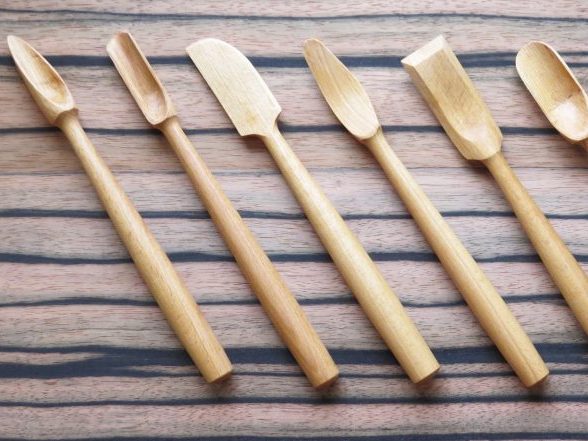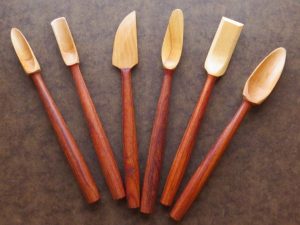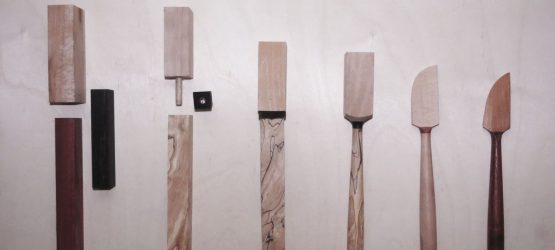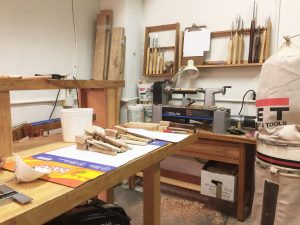Bone Boss Tools
These Tools Are Made For Fragile Materials
Bone Boss tools are designed for excavation of fragile materials, especially bone. Over the years, archeologists have borrowed tools from other trades and fashioned makeshift tools for specialized excavation tasks. When excavating bone, we have often made expedient tools from items such as bamboo, popsicle sticks, barbecue skewers, chopsticks, or dowels. Wood has been the preferred material for these tools, as it is less prone than metal to damage the excavated item.


Selected Hardwood
Crafted to a Specialized Form
Each Bone Boss Tool is crafted from carefully selected hardwood and shaped to a specialized form that allows the excavator to maintain fingertip control in a variety of situations. The basic version of the tool is made from a single piece of hardwood, or blank. Beechwood is the preferred species, because of its durability, tight grain, ability to hold finely carved detail, pleasing color, and resistance to moisture. A more decorative and individualized appearance is achieved by assembling a blank from separate pieces for the handle and blade. Highly figured and exotic species such as spalted maple, bird’s eye maple, rosewood, zebrawood, ziricote, bubinga, bocote, kingwood and ebony can be used to craft attractive handles. An almost infinite variety of patterns can be achieved from glueing up small pieces of contrasting colors, such as cherry/maple, bloodwood/birch or ebony/maple.
Built to Last
Separate Pieces for Handle and Blade
When separate pieces are used for handle and blade, the two pieces are joined with stem formed onto the blade blank, providing strength to the joint between blade and handle. After forming the handle on a lathe, attention turns to the blade. Depending on the desired form, the blade is carved with chisels, gouges, spokeshaves, rasps, card scrapers, drills, saws, etc. Finishing includes light sanding and application of oil or lacquer to protect the surface and enhance the wood’s color and grain.


Years in the Making
Decades of Experience Now Available
I began making these tools during a volunteer site excavation in 2016, when we came down in a refuse pit with a dense deposit of animal bone. When I dusted off the toolkit I had used for historic cemeteries, it was clear that my old tools were inadequate, so I went into my shop and set about making prototypes; some of these were just simply too crude for bone excavation, and some looked more like prison shanks. But my crew mates were enthusiastic and encouraged me to do more. After much experimentation and tinkering, I settled on a set of a half-dozen tool and went into production, with a roll-out at the 2018 SHA Conference in New Orleans. A few more forms were added as a result of conversations with users and continued experimentation in the shop, I’ve been developing new forms and refinements.
Selling the tools at conferences as it gives me a chance, as a retired archeologist, to keep up with my old friends, meet new ones, and hear about current research. Customers get a much better appreciation of the tools when they can see and handle them, and I like to get new ideas and feedback from my customers. Setting up at a handful of professional meetings a year allows me to work at a pace that is more appropriate to craft production than a full-blown business enterprise. Look for my table at the SHA, MAAC, SAA and SEAC meetings or visit my shop in the TAPPS Art Center in the historic Main Street District in Columbia, South Carolina.
